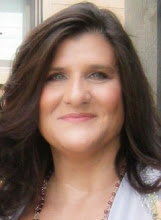AND THEN THERE WERE NONE by Agatha Christie
Agatha Christie is a grand master of
mystery. She specialized in the locked house mystery and "who will die
next" formula.
My mother was a huge mystery and horror
genre fan. And Then There Were None was
both. I began reading Christie's books at age eleven and reread them
occasionally today.
*** SPOILER ALERT***
To begin, a group of seemingly random
people arrive at a remote manor home on a deserted Island for a party.
“Best of an island is once you get there - you can't go any
farther...you've come to the end of things...”
As the bodies pile up, backstories and
the reason for their attendance is revealed. Each has been found guilty of a
crime decided by a judge of one and have been invited to their own execution.
There was a silence—a comfortable replete silence. Into that
silence came The Voice. Without warning, inhuman, penetrating . . . “Ladies and
gentlemen! Silence, please! . . . You are charged with the following
indictments.”
Christie writes in third person
omniscient. The writing is spare. Descriptions kept to a minimum. The audience
is clued in to the connections and murder accusations one at a time.
There was no one on the island but their eight selves.
Each guest has a secret, but not all of
them carry guilt. Their crimes are revealed one after the other.
“But it does come! The blessed relief when you know that you’ve
done with it all—that you haven’t got to carry the burden any longer. You’ll
feel that too, someday…”
The tension comes from the "who
will die next" aspect, the claustrophobia of no escape, and the paranoia
and fear created by not knowing where the monster is and when it will strike
next. This is a critical technique to keep in mind when writing horror.
“I don't know. I don't know at all. And that's
what's frightening the life out of me. To have no idea....”
If there is a weakness, it is that some
of the "crimes" were sort of soft crimes: negligence or incompetence.
The victims are not all guilty of atrocity, so the justice is a little unbalanced.
I must say that I watched the faces of my guests closely during
that indictment and I had no doubt whatever, after my long court experience,
that one and all were guilty.
In addition to the stage play and movies
based on the actual novel, her techniques have been utilized in countless
mystery and horror novels and films.
I incorporated a few of the techniques in Mythikas Island. My characters are on a deserted island with no way off and no foreknowledge of the dangers they face. Secrets are revealed. Suspicion and paranoia heighten the tension.
And Then There Were None was published
in 1939. You can pick up a copy here. One of Christie's books still sells every seven minutes. That is the
type of immortality writers strive for.
I highly recommend studying Christie
for story structure. For my dissection of another of her works, Crooked House, check out this six post series on Dissecting Christie.
Diana Hurwitz is the author of Story Building Blocks: The Four Layers of Conflict, Story Building Blocks II: Crafting Believable Conflict, Story Building Blocks III: The Revision Layers, and the YA adventure series Mythikas Island. Her weekly blog, Game On: Crafting Believable Conflict explores how characters behave and misbehave. Visit DianaHurwitz.com for more information and free writing tools. You can follow her on Facebook and Twitter.
|




This is not a genre I read because I like stories that challenge me, that make me think, that touch my heart. Stories that scare me generally stay on the shelf. Having said that, I do believe Christie's techniques are worth considering, so kudos to you, Diana, for broadening my perspective. It's amazing how much I've learned from this group over my years here on BRP. Thank you, one and all, for helping me to become a better writer. :-)
ReplyDeleteThis is one of my favorite Agatha Christie novels! I need to go back and reread some of the best ones. I like her minimalist style.
ReplyDeleteIt's been so long since I've read a Christie novel that I can't recall the style, and I appreciate this reminder Diana. When I read the books eons ago, I was not reading to learn from her style, I just enjoyed the tales. But I must say, I learned something, as I tend to write in a minimalist style, too.
ReplyDeleteI like to mount theatre production in the same kind of style, leaving much to the imaginations of audience members.